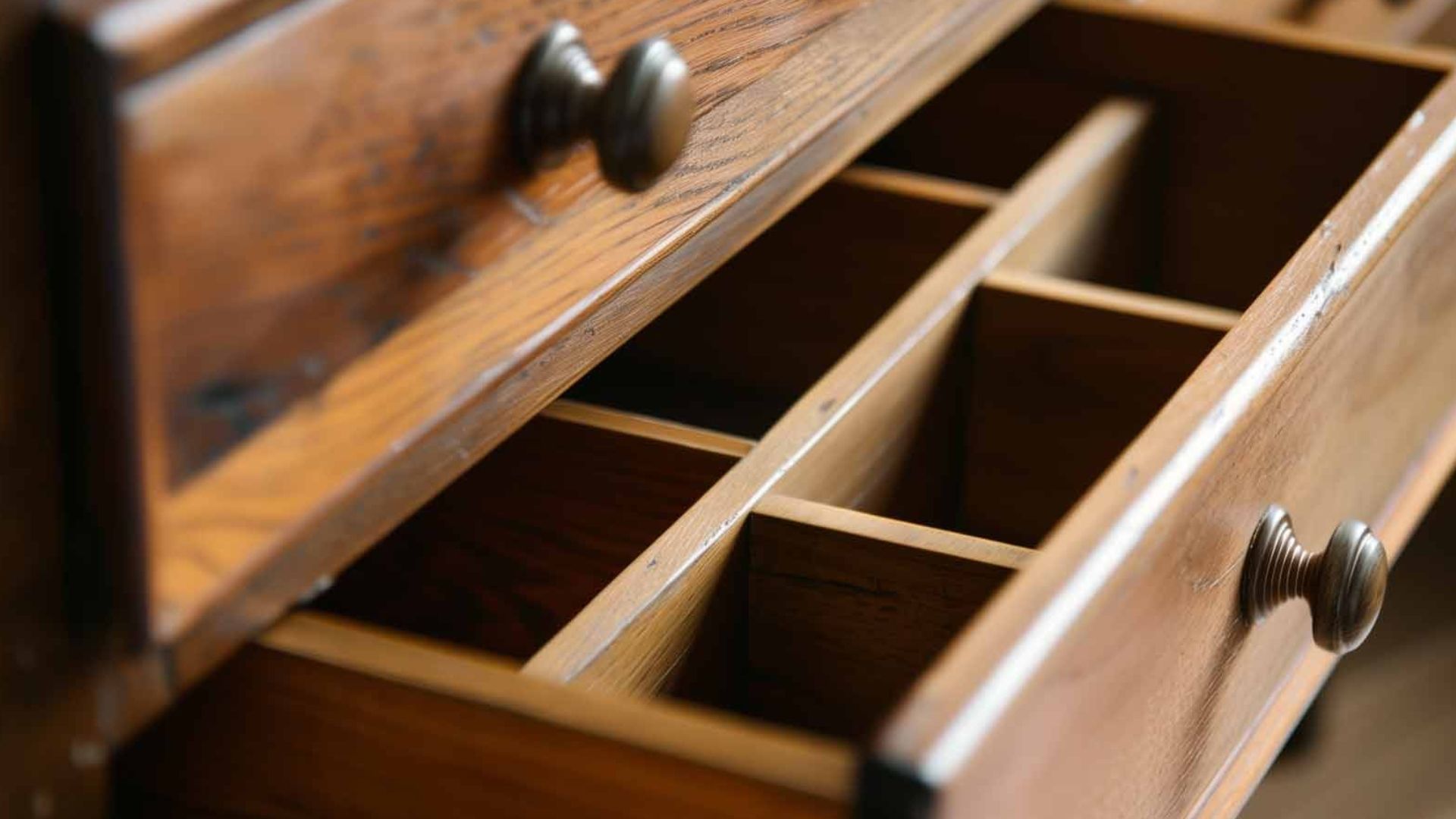How to Pack a Moving Truck - Expert Tips & Guide
Yes, there is a right way to pack a moving truck that will keep your stuff safe and save you time and money. The key is to load heavy items first, create strong rows called "tiers," and fill every gap to stop things from moving around during the drive.
This guide shows you exactly how to pack your moving truck step by step. You'll learn the secrets that professional movers use every day. By the end, you'll know how to fit more stuff, prevent damage, and make your move go smoothly.
Why Proper Truck Packing Matters
Packing your moving truck the right way does three big things for you. First, it keeps your belongings safe from damage during the trip. A well-packed moving truck will keep your belongings free from damage and maximize your available space, too, so you don't have to make extra trips.
Second, it saves you money. When you pack smart, you fit more stuff in one trip. This means less gas, fewer rental days, and no need for a bigger truck.
Third, it makes driving safer. Weight distributed evenly throughout the truck improves gas mileage and overall driving stability. Nobody wants their truck swaying on the highway because everything shifted to one side.
According to the U.S. Census Bureau , the average person will move 11.7 times over the course of their lifetime. Learning to pack right now will help you for years to come.
Choose the Right Size Truck First
Before you start packing, make sure you have the right size truck. You can estimate how much truck space you need with an online calculator or figure 150–200 cubic feet for every fully furnished room in your home.
Here's a simple guide:
- Studio or 1-bedroom : 10-12 foot truck
- 2-bedroom home : 15-17 foot truck
- 3-4 bedroom home : 20-26 foot truck
The wrong size truck can significantly increase your labor, mileage and gas charges. A smaller truck may be less expensive to rent, but any savings will disappear if you have to load and unload it more than once.
Remember that driving a big truck is different from driving your car. Give yourself extra time to brake and take turns slowly.
Gather Your Packing Supplies
You need the right tools to pack your truck safely. Here's what to get before you start:
Protection supplies:
- Moving blankets or furniture pads
- Plastic wrap or stretch wrap
- Mattress bags
- Bubble wrap for fragile items
Securing supplies:
- Tie-down straps or rope
- Packing tape
- Moving dollies or hand trucks
Organization supplies:
- Different sized boxes
- Labels and markers
- Inventory list
Quality supplies make a huge difference. Cheap rope might break, and thin blankets won't protect your furniture from scratches.
The Professional "Tier" System
The most important part of packing a moving truck is understanding how to organize your moving boxes and larger items into stacked rows that won't shift around during travel. The moving industry refers to these rows as "tiers".
Think of it like building with blocks. Each tier needs a strong bottom layer that can hold weight. Then you stack lighter things on top. This keeps everything tight and prevents shifting.
Think of it like a game of Tetris! By cleverly arranging your boxes and furniture, you can avoid any large gaps in your rows and further limit the movement of individual boxes.
Step-by-Step Loading Process
Step 1: Plan Your Load
Look at all your stuff and group it by weight:
- Heavy items : Appliances, dressers, bookcases
- Medium items : Boxes, small furniture, TVs
- Light items : Pillows, clothes, lampshades
Loosely group packed belongings based on size as you pack. This will make things easier and more efficient when you start loading your moving truck.
Step 2: Load Heavy Items First (Create Your Base)
Load your heaviest possessions in an "I" formation. This means:
- Back wall : Put your heaviest appliances (washer, dryer, refrigerator) against the front wall of the truck
- Sides : Place mattresses and box springs along the walls
- Center : Add heavy furniture like dressers and dining tables
When loading dressers or cabinets, make sure that the drawers/doors face the front of the truck. This way, when you lean the top of the furniture toward yourself to unload it, nothing will be flung open.
Pro tip : Empty all drawers first, but you can leave clothes in dresser drawers if they're not too heavy.
Step 3: Protect Your Furniture
Wrap every piece of furniture in moving blankets or pads. Use mover's wrap to secure these unfastened pieces in place and avoid this issue altogether. However, you should avoid sticking tape directly to these wooden items – the chemicals in the adhesive may damage the wood finish.
For mattresses, always use mattress bags. Your mattress should first be protected by a mattress bag, then be rested on its side against one of the side walls of the moving truck.
Step 4: Stack Boxes Smart
Now comes the tricky part. You need to stack boxes on top of your furniture base, but do it right:
When placing boxes onto a row, load them according to the weight of the items inside, not the size of the box. For example, a small box filled with heavy books should not be stacked on top of a large box filled with pillows and blankets.
Box stacking rules:
- Heavy boxes on bottom, light boxes on top
- Keep boxes the same size together when possible
- Fill boxes completely so they don't crush
- Label the top and sides so you can see what's inside
Step 5: Fill Every Gap
Leaving extra room between items makes it possible for things to shift during transit. Stack items tightly to avoid gaps, and fill empty spaces with boxes or packing materials.
Use soft items like pillows, blankets, and clothes to fill small spaces. This stops everything from sliding around when you drive.
Step 6: Secure Everything
Before you close the truck, tie everything down. Use tie-down rope to secure each row before beginning the next one, especially if that row includes large, heavy furniture.
Run straps from side to side and front to back. Make sure nothing can move more than an inch in any direction.
Special Items Need Special Care
Fragile Items
Narrow openings within your rows can actually present more opportunity! Depending on the size of the gap, this can be the ideal place to slide a TV box or mirror/artwork box for a snug fit.
Pack TVs in their original boxes if you have them. Otherwise, wrap them in blankets and slide them between mattresses.
Appliances
Prepare appliances before loading:
- Empty and defrost refrigerators 24 hours before
- Drain washing machines completely
- Remove glass shelves from refrigerators
- Tape down loose parts
Long Items
Once you've finished building up a row, there will likely be a few inches of remaining space between the top of the row and the ceiling of your truck or container. This is the ideal zone for long, lightweight items like skis and fishing rods.
Common Packing Mistakes to Avoid
Don't make these errors:
- Loading light items first : This wastes space and makes stacking impossible
- Leaving gaps : Empty spaces let things slide and get damaged
- Forgetting to wrap furniture : Scratches and dents happen fast
- Packing hazardous items : Never pack paint, gas, or cleaning chemicals
- Not securing loads : Even a small shift can cause big damage
When items are packed improperly, they can shift and collide with each other during transit.
Loading Efficiently: Time and Helpers
Working together, two people can load a 2-bedroom apartment in about three hours, but three people can load twice as much in approximately the same amount of time.
Get help when you can. Moving heavy furniture alone is dangerous and slow. The CDC reports that back injuries account for nearly 20% of all workplace injuries , and many of these come from improper lifting. According to the National Institute for Occupational Safety and Health, more than one million workers suffer back injuries each year from lifting tasks.
Plan your path. Clear a straight route from your home to the truck. Remove rugs that might cause trips and make sure you have good lighting.
What Not to Pack in Your Truck
Some items should never go in a moving truck:
- Hazardous materials (paint, gas, propane)
- Important documents (keep these with you)
- Valuables and jewelry
- Medications you need
- Food that can spoil
It's a good idea to keep small, valuable items with you in the cab, along with anything else you might need to quickly grab during your move.
Different Types of Moves Need Different Strategies
Local Moves
For moves within the same city, you might be able to make multiple trips with a smaller truck. This can save money, but only if the rental rate is much cheaper.
Long-Distance Moves
If you want to know how to pack a truck for a long distance moving, follow all the suggestions in steps 1, 2 and 3. However, do not pack any food, liquids or items you'll need right away, such as an overnight bag, in the truck.
For long moves, pack everything in one trip. The extra gas and time for multiple trips costs more than renting a bigger truck.
Safety Tips for the Road
After you finish packing:
- Check your load : Walk around and push on items to make sure nothing moves
- Test your lights : Make sure brake lights and turn signals work
- Drive carefully : Take turns slow and brake gently
- Check your load again : Stop after 30 minutes of driving to make sure nothing shifted
The National Highway Traffic Safety Administration continues to work on improving road safety, as traffic fatalities remain a serious concern. Drive slowly and carefully: Take turns slowly, maintain a safe following distance, and avoid sudden stops or sharp turns.
Unpacking Made Easy
Pack your truck with unpacking in mind:
- Load items you need first in the back (closest to the door)
- Keep cleaning supplies easy to reach
- Put essential boxes where you can grab them quickly
- Take photos before you pack so you remember where everything goes
Professional movers often offer unpacking services if you want help getting settled in your new home.
When to Call Professional Movers
Sometimes it makes sense to hire professional local movers instead of doing it yourself:
- You have lots of heavy furniture or appliances
- You're moving expensive or fragile items
- You don't have enough help
- You're not comfortable driving a big truck
- Your move is very long distance
Professional movers have the right equipment and know how to pack trucks safely. They also carry insurance to protect your belongings.
If you're in the Edmonton area and need reliable moving help, consider professional moving services that specialize in safe, efficient packing and transport.
Final Thoughts
Packing a moving truck the right way takes time and planning, but it's worth the effort. You'll protect your belongings, save money, and reduce stress on moving day.
Remember the key steps: choose the right size truck, load heavy items first, create strong tiers, fill all gaps, and secure everything tightly. Take your time and don't rush - a few extra minutes of careful packing can prevent hours of problems later.
Whether you're moving across town or across the country, these techniques will help you pack like a professional. Your future self will thank you when everything arrives at your new home in perfect condition.
Ready to start your move? Use this guide to pack your truck safely and efficiently. Moving doesn't have to be stressful when you know what you're doing.



